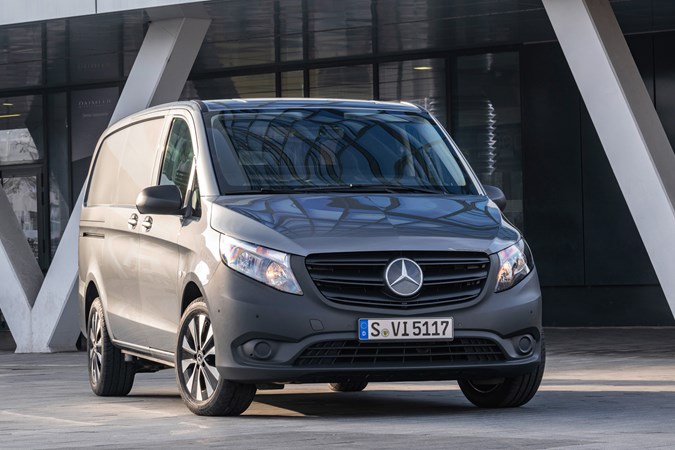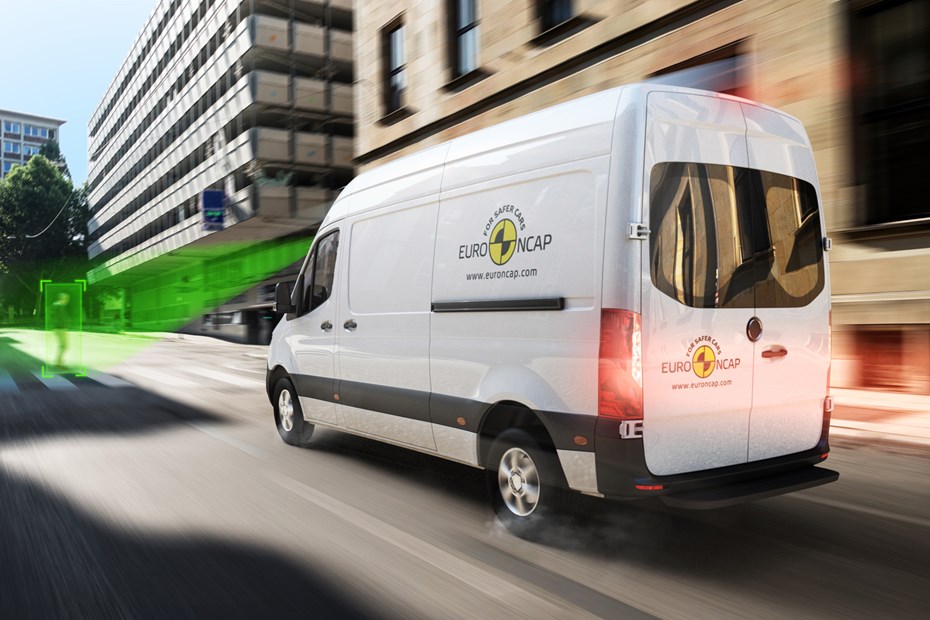Crash safety organisation Euro NCAP has begun a campaign to improve van safety, and has already tested the active safety equipment of 19 of the most popular van models. Of these, 14 performed well enough to receive an award – which should immediately tell you that five of them didn’t…
This means that there are now some new vans that Euro NCAP is recommending that people do not buy.
So what exactly has Euro NCAP been looking at, and what does it mean for your next van purchase? Read on to find out more.
What is Euro NCAP?
In the organisation’s own words:
‘Euro NCAP organises crash tests on new vehicles and provides motoring consumers with a realistic and independent assessment of the safety performance of some of the most popular cars sold in Europe.
‘Established in 1997 and backed by several European Governments, motoring, consumer and insurance organisations, Euro NCAP has rapidly become a catalyst for encouraging significant safety improvements to new car design.’
What has the Euro NCAP commercial van safety campaign been testing?
When it comes to vans, Euro NCAP has been looking not so much at actual crash performance – though there has been some analysis of this, which we’ll come to in a moment – but the availability and performance of basic safety equipment. Including active safety equipment, known as Advanced Driver Assistance Systems or ADAS.
The reason for this is that Euro NCAP knows that changing van design and body structures to improve crash safety will take years and years, but where ADAS gear is fitted it can actually help to prevent accidents in the first place.
Examples of ADAS include autonomous emergency braking (AEB), lane-keeping assistance and blindspot monitoring. Vans with these things were fitted were tested in exactly the same way as they are in cars.
Other safety equipment Euro NCAP has been surveying includes the number and general availability of airbags and seatbelt warning indicators (things that flash or buzz when seatbelts aren’t worn).
By doing this, Euro NCAP hopes to speed up the standardisation of many of these safety items – which will have to happen by EU General Safety Regulation (GSR) in coming years anyway.
So what does Euro NCAP think of current van safety?
Euro NCAP is well known for not pulling any punches, and has come out quite fighty here – which is actually rather good to see.
So as well as setting a number of different award levels, it’s been quick to point out that not only do the ADAS available on most vans fall short of the sophistication of similar equipment fitted to passenger vehicles – for example, van AEB systems often don’t detect pedestrians or cyclists – it’s also often quite hard to find out what’s available at all.
On its van safety campaign page, Euro NCAP states: ‘Our fitment survey reveals that ADAS fitment on commercial vans across Europe is generally poor, in stark contrast to what is the case for passenger cars today. Euro NCAP experienced significant problems, not only in understanding what is being offered by vehicle manufacturers based on marketing information, but also in finding concrete examples of vans equipped with “available” ADAS.
‘In some instances, claims made by vehicle manufacturers could not be independently verified, nor could equipped vans be procured in a reasonable time frame. If available, ADAS is mostly available as option, with very few exceptions.’
What’s more, Euro NCAP also says: ‘Occupant safety of commercial vans has only partially benefited from the advances in vehicle safety in the last decade. The fitment of advanced restraint systems is generally poor. For instance, of 19 popular van models examined, only six offer two frontal airbags as standard and none has standard side curtain airbags.
‘Specifically, the protection of the passenger is overlooked, as basic seat belt reminders, airbags and belt load limiters on the passenger seat are often lacking. This is in stark contrast to people carrier variants, that have been tested by Euro NCAP and consequently offer standard fitment of such equipment.’
Has it done any crash-testing at all?
Yes, and most critically of all, it’s been testing what happens when a large loaded van crashes into a small passenger car.
An example of this involved firing a half-loaded Nissan NV400 large van into a Nissan Juke. Weighing around 2.8-tonnes, the van – which is based on one of the oldest designs on the market – did a substantial amount of damage to the car – which is one of Nissan’s newest (and safest) designs.
Euro NCAP concludes – perhaps obviously, but it’s still important – that when a large vehicle crashes into a smaller one, the smaller one almost always comes off worse.
But this refers back to the understanding that changing van design and engineering is going to take years, whereas fitted additional safety equipment to help reduce accidents in the first place can be done quite quickly.
At least in theory – the reality is that the older electronics used in many vans may not be compatible with the latest safety technology.
What vans has Euro NCAP tested, and how have they been rated?
Euro NCAPs usual crash test results are star-rated – but since it hasn’t been properly crash-testing vans on this occasion, it’s instead created four award bandings: Platinum, Gold, Silver and Bronze.
Testing 19 vans – which Euro NCAP says accounts for an incredible 98% of European sales in 2019 (and yes, that still includes the UK) – none of them made the grade for the top Platinum rating.

However, the Ford Transit, the Mercedes-Benz Vito and the Volkswagen Transporter 6.1 were all given Gold awards, each being available with AEB that detects other vehicles, pedestrians and cyclists, as well as lane assistance, speed assistance and attention assistance.
Silver awards were given to the Ford Transit Custom, Mercedes-Benz Sprinter, Opel/Vauxhall Vivaro, Peugeot Expert and the Volkswagen Crafter.
Bronze awards were given to the Citroen Relay (known as the Jumper on the continent), the Citroen Dispatch (known as the Jumpy), Fiat Ducato, Iveco Daily, Peugeot Boxer and Toyota Proace.
Which vans does Euro NCAP say you shouldn’t buy?
The Fiat Talento, Opel/Vauxhall Movano, Nissan NV400, Renault Master and Renault Trafic did not merit an award at all, leading Euro NCAP to explicitly say these vans ‘are not recommended for their general lack of safety systems.’
Going further, Euro NCAP is also very clear to say that when it comes to ADAS equipment, the ‘Best brands in terms of availability are Ford, VW and Mercedes-Benz, worst are Fiat, Nissan and Renault.’
Furthermore: ‘The best vans tested were Volkswagen Transporter, Ford Transit and Mercedes-Benz Vito. The Fiat Talento, Renault Trafic , Renault Master, Opel [Vauxhall] Movano and Nissan NV400 are not recommended by Euro NCAP, as they are very poorly equipped or have no driver support systems available.’
What’s the Parkers view?
We believe safety to be of paramount importance in any vehicle. But implementing it successfully is always a challenge, and there is always the concern that not all modern active safety aids work effectively – we’ve driven a number of vans with over-sensitive autonomous emergency braking systems, for example, meaning that they sometimes brake too hard or even with no reason to do so.
There remains a question of how much van buyers are interested in van safety, especially if it adds to cost. Extra safety features also, inevitably, increase vehicle weight, which would also potentially reduce payload and worsen fuel economy – making running costs and well as purchase costs higher.
But this becomes a tricky point to negotiate if, as Euro NCAP has proven, poor van safety has a negative impact on general road safety. If your heavy van crashes into a car in an event that could have been avoided by the addition of widely available safety equipment, it’s hard to make any argument that would excuse not fitting such equipment.
Putting aside the costs issues, however, there is the concern that too much active assistance can be distracting and cause driving standards to fall. We’d still like to see at least some costs invested in improved driving standards, rather than in simply throwing technology at the vehicles themselves.
After all, this would improve whole fleet safety, whereas extra-safe new vans only improve safety where these are used.
Also read:
>> Latest van advice on Parkers
Just so you know, we may receive a commission or other compensation from the links on this website - read why you should trust us.








